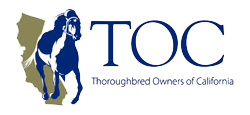By Tom Robbins
All too often in this business we take our job responsibilities for granted and view them as “routine.” As we in the racing department perform our daily duties, we improperly assume that everyone else in the sport understands precisely what is involved in determining entries, post position draw, scratches, etc.
In this article I hope to identify some of the concerns and procedures in the racing office so that owners and trainers might have a better understanding of our function. If possible, I will dispel some of the myths and misconceptions that have developed over the years.
Horse Inventory Determines Races
Before we ever get to the start of a meet and the daily task of filling racing cards, some important work must take place. That work will, in no small part, determine the success of the meet.
Chief among those tasks is determining stall assignments. In reviewing trainers’ requests for stabling, the racing secretary must assess the available horse inventory for the upcoming meeting. The character and quality of the inventory will dictate the quality and types of races the racing secretary can write. In this regard, few recognize that the racing secretary has dual obligations; first to the wagering public in presenting the most attractive racing program possible and second to owners and trainers by offering races in which their horses will be competitive.
The Condition Book
Generally speaking, the condition book covers two weeks of racing. It is typically made available to horsemen about one week prior to the first day of races listed in the book. This is the most important document in racing, at least for owners and trainers. They will utilize “the book” to select a race or races they feel best suits their horses.
Depending on the track, entries for races are due 48 to 72 hours before race day. Information regarding the closing of entries for every track is listed in its condition book.
Clerk of the Course
At about 7:00 a.m. on the day of the race closing, trainers’ and jockeys’ agents begin entering horses in the racing office. Before any entry can be made, the specific horse must be registered with the Clerk of the Course and its foal registration papers from The Jockey Club be on file in the racing office. In addition to assuring that a horse is registered, the Clerk of the Course is also responsible for maintaining accurate information regarding a horse’s ownership, trainer, breeder, and silks description, as well as issuing horsemen’s credentials, car stickers, and CHRB license validations.
Assistant Racing Secretary
As entries are made, each is directed to the assistant racing secretary who checks the individual horses’ eligibility and proper weight assignment. The assistant also tracks the number of entries per race, continually updating the racing secretary, horsemen, and jockeys’ agents about the status of each race.
Veterinarians’/Starters’/Stewards’ Lists
Once the assistant finishes the eligibility and weight assignment checks, the entries are passed along to the data entry operator who inputs all relevant information. The data is crosschecked against the veterinarians’, starters’, and stewards’ lists. A horse on any of these lists is deemed “not eligible” to race. Horses on these lists can only be removed by the entity on whose list the horse appears.
There are state and association veterinarians that may place a horse on the vets’ list. Unsoundness, bleeding, and sickness are often the reasons why a horse is placed on this list. A physical exam and/or qualifying workout is usually required for removal. Horses on the starters’ list are generally those that require additional schooling at the starting gate or have demonstrated poor behavior in the gate. Ownership problems and inferior performance on the track are some of the reasons why a horse may make the stewards’ list. In most instances, a workout may be all that is required for removal.
Determining “The Card”
Once the entries have been checked and processed, the racing secretary, in conformity with the terms of the contract agreement with TOC, determines which of the races will be used to make up the program, of “the card.” He will also determine “the set” or order in which the races will be run. Once that determination is made, the assistant racing secretary oversees the postposition draw.
If a race overfills, the starters are determined by “preference” conditions. For example, some races are written to prefer one horse over another based on races won or the class in which the horse previously competed. In most cases, and all things being equal, selections are determined by the “date system,” meaning the horse, which has started most recently, is the least preferred.
Detailed information on the date system and preference clauses can be found in each condition book.
“The Draw”
When the “final,” the races to be used, is announced, agents, trainers, and owners assemble to witness the drawing of postpositions. Generally speaking, one of the stewards is present at every draw to monitor the procedure and resolve any disputes that may arise. A member of the racing office staff will coordinate the draw, utilizing a trainer, jockeys’ agent or owner to select the numbered pills representing post positions, and actual entry cards. It is a daily ritual and a rather exciting conclusion to the several hours, multi-faceted entry process.
The Overnight
In the racing office, the close of the draw really signifies the start of our day. For example, once the field is set, the data entry operator compiles all relevant race information and a computer generates the “overnight.” In addition to providing basic information about the field in each race, the overnight includes horsemen’s notices and “extra races,” information vital to every horseman.
Horse Identification
With the overnight in hand, horse identification department checks all horses, beginning with those which have never started, to assure the proper identity of the animal. Specifically, The department confirms that a horse’s physical markings match the description reflected on the horse’s registration papers. Discrepancies may result in a horse being deemed ineligible to run.
Once the horses have been properly identified, the program production department begins compilation of the official program, blending information on imported simulcast events with the live race program.
Scratches/Recorded Workouts
Official scratch time occurs the morning before a scheduled race day. Owners or trainers may elect to scratch if entries are sufficient. Likewise, any overfilled races are paired down to the maximum field size.
It is at this point in time that past performance information becomes available and eligibility and weights are once again checked. It is also at this point that horses which have not raced recently, or never at all, must demonstrate that they have a sufficient number of official recorded workouts qualifying them to compete. Such workout information is reviewed by the stewards who ensure that each horse qualifies.
Relevant workout and gate approval criteria is listed in each condition book and, through TOC’s efforts, are now standardized throughout the state.
When the scratch process is completed, it is time for the morning line maker to set the “odds.” The morning line is not necessarily that individual’s personal assessment of each horse but rather his/her professional evaluation as to how the wagering public will handicap and bet the race.
Race Day Inspections
On the morning of every race day, the veterinarian team (state vet, track vet, and off-site vet) performs soundness examinations on each horse scheduled to run. Horses determined to be physically unfit are not permitted to race.
In addition to the morning inspection, just prior to each race as the horses arrive in the receiving barn; the state vet once again examines the horses. So too does the horse identifier and the horseshoe inspector whose job it is to ensure proper shoeing. As the horses are saddled, the paddock judge ascertains that each horse is properly equipped. If the horse is tacked as previously approved, i.e., with proper blinkers, bit, shadow roll, etc., it is time to race.
Unfortunately, this article provides only a glimpse at the racing department’s duties. Yet, as one can see, this is a highly regulated affair with numerous checks and balances that take place from the time of entry to the horses actually racing. It is a process designed to ensure the integrity of our sport and to instill confidence in the wagering public.
We encourage all owners, whether neophyte or veteran, to witness and participate first hand in the processes and functions of the racing department. Every member of our staff is available to assist the horsemen and answer their questions.
Horsemen’s Liaisons
In addition to the racing office staff and TOC’s own liaison staff, track liaisons are also available to answer owners’ questions and to make arrangements for or accommodate the requests of owners, trainers, and their guests. The following is a list of liaisons available to provide assistance at all of California’s major racetracks.
Santa Anita
Nancy Wallen, Horsemen’s Liaison Director (626) 574-6471
Del Mar
Lisa Iaria, Horsemen’s Liaison (858) 755-1141 ext. 1040
Golden Gate Fields
Jeanne Shand (510) 559-7351 & (650) 573-4600
We, who have been participants for so long in Thoroughbred racing, take for granted everyday life at the racetrack. But to those who are not so familiar with this business, the processes, including those of the racing office, can be intimidating. We encourage all horsemen and owners to feel welcome to ask questions so that we may make the racing experience more enjoyable and much less intimidating.
Tom Robbins served as Vice President of Racing at Santa Anita, and Director of Racing for Oak Tree and Del Mar Thoroughbred Club.






